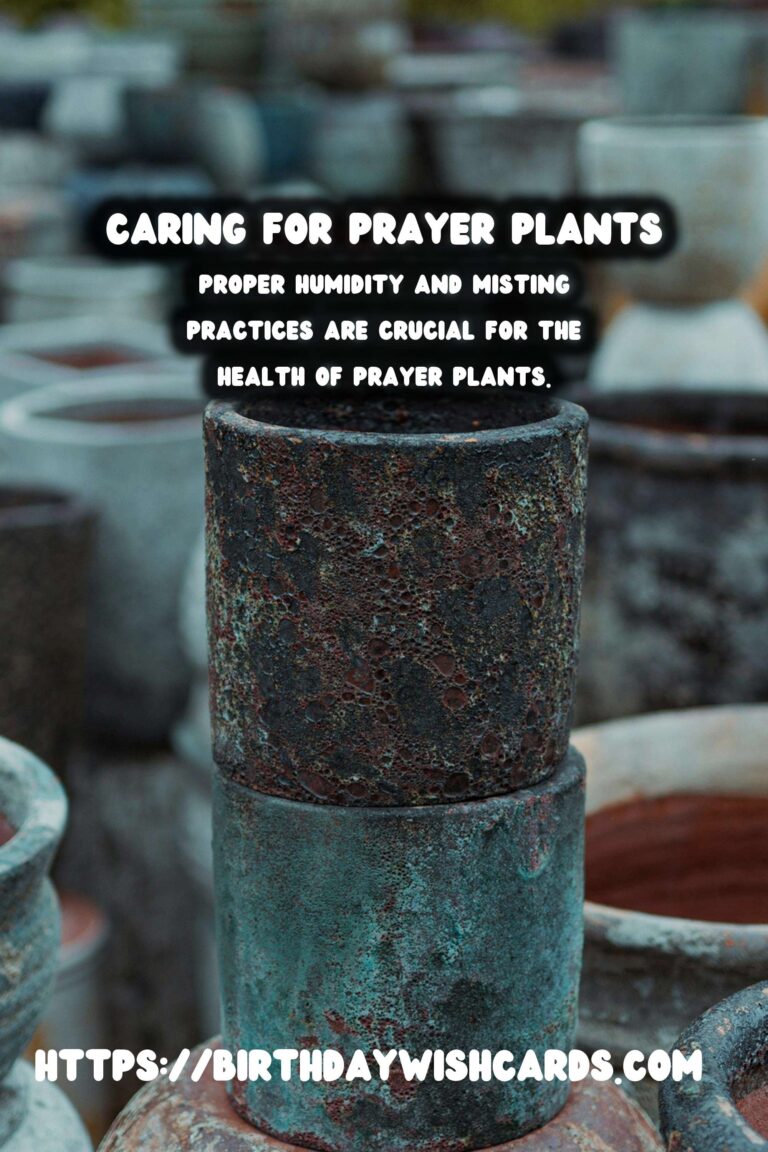
Prayer plants, known for their striking foliage and ability to move their leaves in response to light, are a favorite among houseplant enthusiasts. Native to the tropical regions of Central and South America, these plants thrive in environments that mimic their natural habitat. Proper care, especially in terms of humidity and misting, is essential for their growth and well-being.
Understanding the Natural Habitat
Prayer plants, scientifically referred to as Maranta leuconeura, are native to the rich, humid forests of the tropics. In their natural habitat, they enjoy high humidity levels, consistent moisture, and indirect light. These conditions allow them to flourish, showing off their vibrant patterns and colors.
The Importance of Humidity
Humidity plays a crucial role in the health of prayer plants. In their native environment, humidity levels are significantly higher than those typically found in most homes. When the air is too dry, prayer plants can suffer, showing signs of stress such as brown leaf tips and edges. To ensure your prayer plant is happy, maintaining a humidity level of around 60% or higher is ideal.
Ways to Increase Humidity
There are several methods to increase humidity for your prayer plant:
- Humidifiers: Placing a humidifier near your plant can effectively raise the humidity levels.
- Grouping Plants: Grouping several plants together can create a microclimate with higher humidity.
- Water Trays: Placing a tray with water and pebbles under the plant pot can help increase humidity as the water evaporates.
Misting: A Helpful Practice
Misting is another way to provide moisture to your prayer plant. This practice mimics the natural dew and rain they would receive in the wild. Regular misting can help keep the leaves hydrated and free from dust, improving their overall appearance and health.
How to Mist Properly
To mist your prayer plant effectively, use a spray bottle with clean, room-temperature water. Mist in the morning to allow the leaves to dry during the day, preventing fungal issues. Aim to mist the leaves lightly, avoiding excessive water on the soil to prevent root rot.
Signs of Inadequate Humidity
Prayer plants will show signs if they are not receiving enough humidity. Common indicators include browning leaf edges, curling leaves, and a general lack of vigor. If you notice these symptoms, it may be time to assess and adjust the humidity levels around your plant.
Conclusion
Caring for prayer plants involves paying close attention to their humidity needs. By creating an environment similar to their natural habitat, you can enjoy the beauty and movement of these fascinating plants. Whether through misting, humidifiers, or grouping, providing the right humidity will ensure your prayer plant thrives.
Prayer plants are known for their striking foliage and require specific humidity levels to thrive. These plants are native to the tropical regions of Central and South America. Proper humidity and misting practices are crucial for the health of prayer plants. Signs of inadequate humidity include brown leaf edges and curling leaves. Creating a tropical environment will help your prayer plant flourish.
#PrayerPlants #Houseplants #PlantCare #Humidity #Misting

